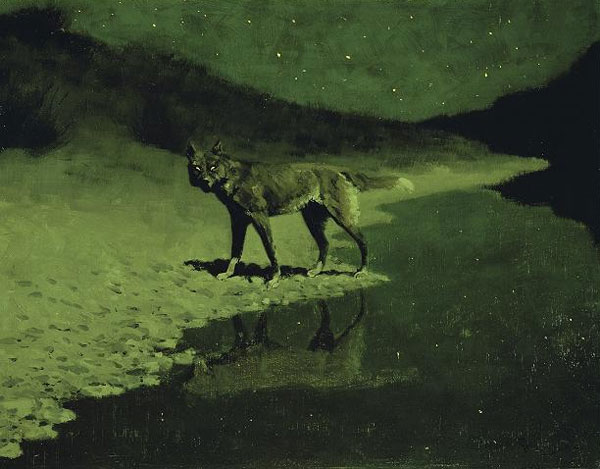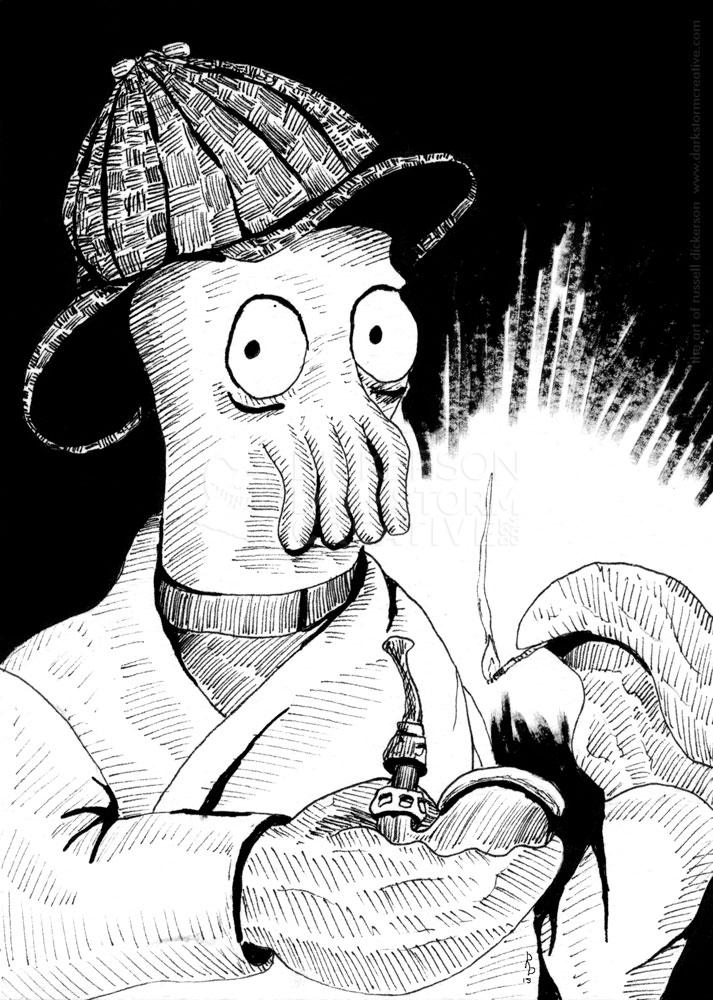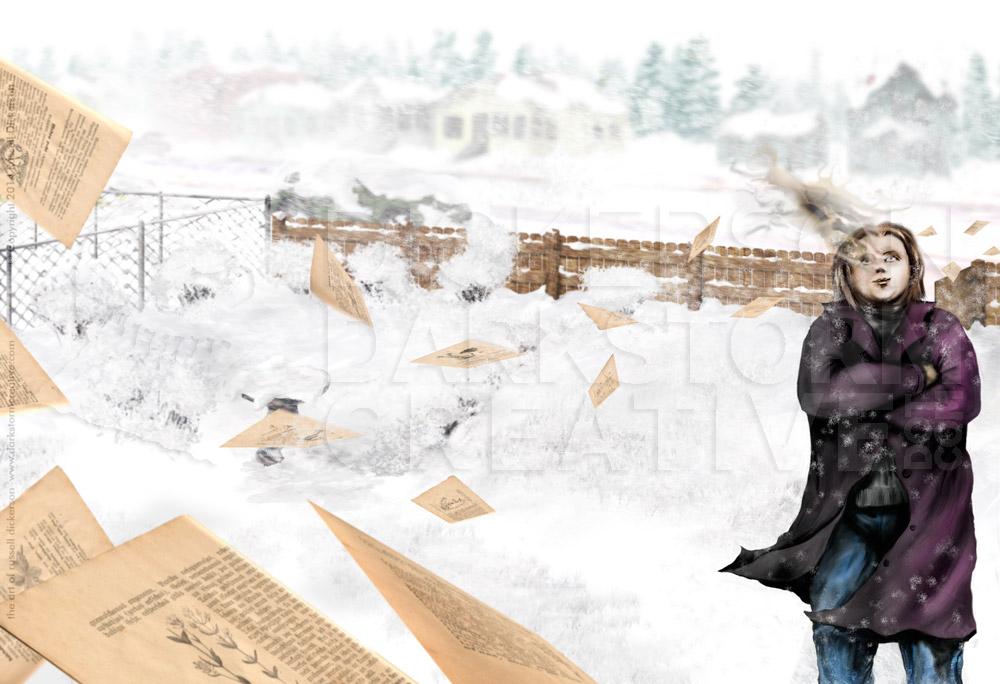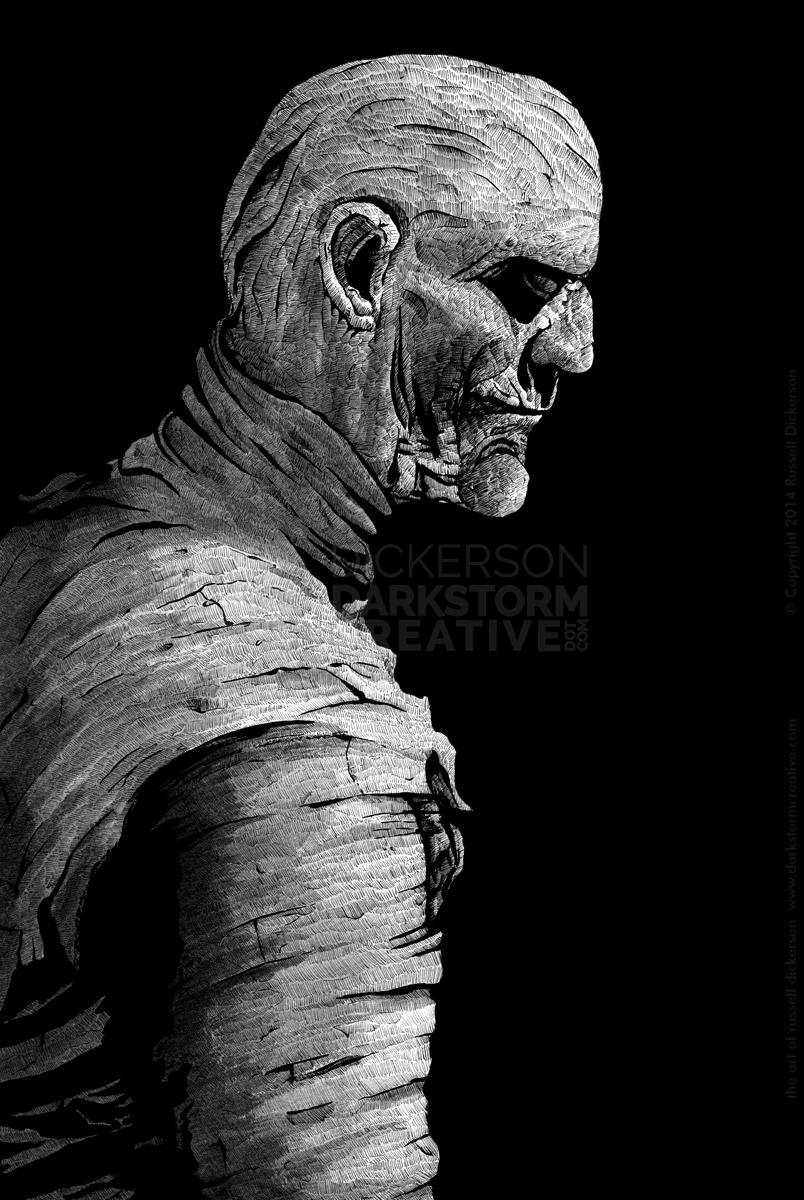This is Frederic Remington’s Moonlight, Wolf, (1909; oil on canvas, 20 1/16 x 26 in), a bit of a different image from the typical Remington western art you’d see.
Much of the effect had to do with Remington’s life. Many of his western works appeared before the Spanish-American War, and after he became an artist on the ground in Cuba his work took on a much darker tone. In this image, Remington has dropped the pretense of watching the scene from the distance. The viewer is right in the middle of things now, and in fact is in grave danger from the ominous wolf.
This is where Remington’s art had changed, and for me some of his best, most emotional works were around this time. Remington’s earlier works were often illustrations, especially in war, where the outcome and the story are all there to follow. But here, Remington only brings the story to us, from there we have to decide whether the wolf will have a go at us or slink away under the cover of night.
I can’t speak to the palette on this one, I found a few different versions online that were all a little different. But I think in the balance of tones he’s done very well here. The lighter tone of the sand (or beach) follows through the center of the work, and always brings your eye back to the wolf. The darkness is enhanced by the reflection in the wolf’s eyes, and the viewer is forced to see the power of the wolf and of the unknown in the night.
Living in the west, western artists are often put aside to specific touristy galleries. They are often seen as only fitting a certain style, and certain topic and a certain time in history. But I think for the really fantastic artists out there the genre is irrelevant, they are able to bring something else to the table, something extraordinary. Remington breaks out of the western here with the dark and ominous feel of the unknown, and above all else engages the viewer, making them decide what happens next.
Opinions?
Russ



